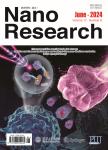Hierarchical hollow Li4Ti5O12 urchin-like microspheres with ultra-high specific surface area for high rate lithium ion batteries
Hierarchical hollow Li4Ti5O12 urchin-like microspheres with ultra-high specific surface area for high rate lithium ion batteries作者机构:Department of Material Science and Laboratory of Advanced Materials Fudan University Shanghai 200438 China
出 版 物:《Nano Research》 (纳米研究(英文版))
年 卷 期:2014年第7卷第7期
页 面:1043-1053页
核心收录:
学科分类:081702[工学-化学工艺] 0808[工学-电气工程] 08[工学] 0817[工学-化学工程与技术]
基 金:supported by the Ministry of Science and Technology of China (973 Project) 国家自然科学基金 sponsored by Shanghai Pujiang Program and “Shu Guang” project of Shanghai Municipal Education Commission and Shanghai Education Development Foundation
主 题:Li4Ti5O12 urchin-like microspheres EELS electrochemicalperformance lithium ion batteries
摘 要:Large specific surface area is critical for Li4Ti5O12 to achieve good rate capacity and cycling stability, since it can increase the contact area between electrolyte/ electrode and shorten the transport paths for electrons and lithium ions. In this study, hierarchical hollow Li4Ti5O12 urchin-like microspheres with ultra-high specific surface area of over 140 m2·g^-1 and diameter more than 500 nm have been successfully synthesized by combining the versatile sol-gel process and a hydrothermal reaction, and exhibit excellent electrochemical performance with a high specific capacity of 120 mA-h.g-1 at 20 C and long cycling stability of 〈 2% decay after 100 cycles. Ex situ electron energy loss spectroscopy (EELS) analysis of Li4Ti5O12 microspheres at different charge-discharge stages indicates that only a fraction of the TP* ions are reduced to Ti3+ and a phase transformation occurs whereby the spinel phase Li4TisO12 is converted into the rock-salt phase Li7Ti5O12. Even after 100 cycles, the oxidation-reduction reaction between Ti3+ and Ti4+ can be carried out much more effectively on the surface of Li4Ti5O12 nanosheets than on commercially available Li4Ti5O12 particles. All the results suggest that these Li4Ti5O12 microspheres may be attractive candidate anode materials for lithium ion batteries.



